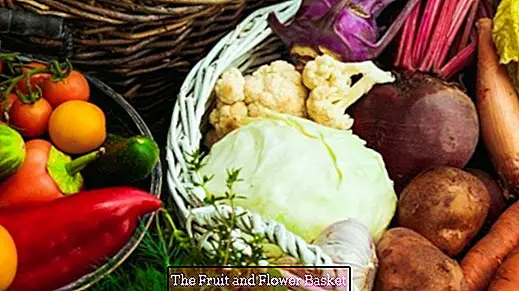Store vegetables optimally
An optimal storage of vegetables is difficult in the household, so you should consume the vegetables quickly at home, but if it is to be stored for some time, it is good to know at which temperature that should be done best.
There are people who go shopping every day and others who do their shopping for several days or even several weeks. Since vegetables are often and often bought, but not cooked immediately and prepared, one should keep in mind that vegetables require storage at certain temperatures. So you can ensure longer freshness, vitamins and quality. After all, one does not know exactly how long the goods have already been stored during trading. Since we do not have the opportunity at home in the trade is u. a. different temperature zones, evaporative cooling (mist of small water droplets) we just have to watch that we at least know where and how I can store the vegetables for a longer shelf life.
At too high temperatures, the degradation of ingredients increases and the vegetables dry out quickly and molds start to grow. Therefore, you should store cold-tolerant vegetables at home at room temperature, but protected from direct sunlight and drafts. Many already know, the best place for z. B. Potatoes and onions is a basement room.
For refrigerated vegetables of course, the refrigerator or the vegetable compartment is the best place for storage.
After the purchase of z. As carrots, kohlrabi and radishes should best remove the same fresh leaves, because it deprives the vegetables unnecessarily much water and nutrients.
It is also very important to know that one should always keep fruit and vegetables separate from each other, because many types of fruit release a gas called ethylene, which only accelerates the ripening process and makes the vegetables grow old too soon.
Since I am very interested in the topic, I did some research on the Internet to make me smarter when it comes to storing vegetables. Good storage saves money and time needed to buy new vegetables. That's when I came across a table that gives some information about the best storage of some of the most popular vegetables we buy.
Cold-resistant vegetables
| cauliflower | Shelf life up to 30 days at 0 degrees |
| broccoli | Shelf life up to 14 days at approx. 0-1 degrees |
| Chinese cabbage | stable at 0 degrees for 30 - 60 days |
| chicory | Stable at 0-1 degrees for up to 30 days |
| iceberg lettuce | Shelf life up to 20 days at 0 degrees |
| Lamb's lettuce | Stable at 0.5 degrees for up to 20 days |
| carrots | Stable at 0-1 degrees for 80-120 days |
| cabbage | Stable at 0 degrees for up to 90 days |
| lettuce | Stable at 0 degrees for 7-20 days |
| kohlrabi (without leaves) | Stable at 0 degrees for 50-80 days |
| leek | Stable at 0-1 degrees for 30-60 days |
| mushrooms | Stable at 0 degrees for 5-7 days |
| radish | Stable at 0 degrees for up to 7 days |
| Brussels sprouts | Stable at -2 degrees for 20-35 days |
| celery | stable at 0-1 degrees up to 28 days |
| asparagus | Stable at 0-2 degrees for 14-21 days |
| spinach | Stable at 0-1 degrees for 10-14 days |
| savoy | at -1 degrees up to 80 days |
| onions | Stable at -1 degrees for up to 200 days |
Cold-sensitive vegetables
| Green beans | Stable at 7-8 degrees for 7-10 days |
| cucumbers | Stable at 7-10 degrees for 10-14 days |
| potatoes | Stable at 4-7 degrees for 50-150 days |
| pumpkin | Stable at 7-10 degrees for up to 30 days |
| paprika | Stable at 7-10 degrees for up to 21 days |
| tomatoes | Stable at 8-10 degrees 7-21 days |
| zucchini | Stable at 8-10 degrees for up to 14 days |
If you keep to the temperatures, you can buy and stock vegetables. I'm a bit smarter now and now I know how to keep my vegetables, I hope I could help you with that as well.





